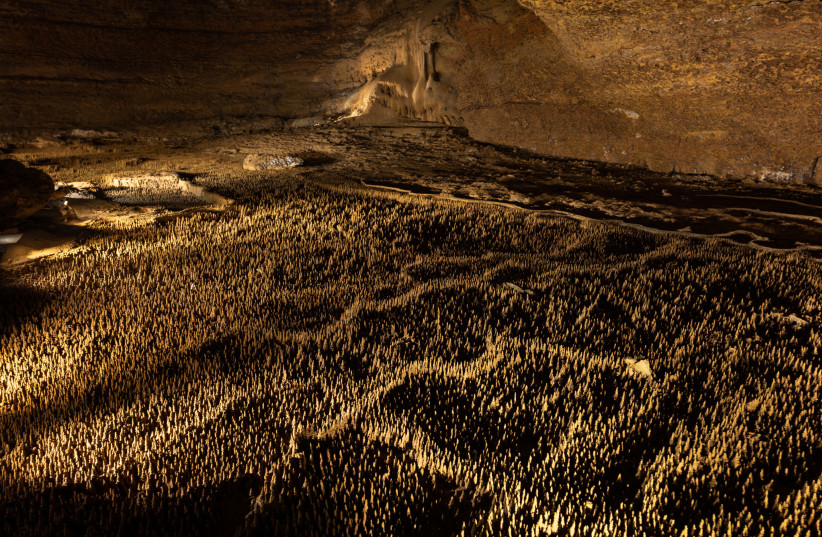the Trabuc Caves in the South of France a rare geological phenomena.
The caves, located in Mielt in the Dordogne region of southwestern France, are the largest network of underground passages in the Cevennes. They were first explored in 1823 and since then, nearly 10 kilometers of them have been mapped, although speleologists (people who study caves) believe they extend up to two or three times that distance, according to Atlas Obscura.
In addition to the rich history of humans using them - the caves served as a refuge for various groups since prehistoric times, including various religious movements such as the Huguenot Camisards during the Reformation, and later as a hiding place for highwaymen called Trabucaïres, from whom the caves got their oil - the caves are mainly known for the strange and unexplained phenomenon known as "the 100,000 soldiers"
When the exploration of the cave began in 1945, the speleologists encountered what appeared to be tens of thousands of tiny soldiers standing still (hence the name), but they are actually a unique type of concretion (rocky solidification) that still has no explanation.
The "soldiers" standing on the floor of the cave are only a few centimeters tall, but they are unique to these caves and a similar phenomenon does not exist anywhere else in the world.

These mysterious mineral masses were formed underwater and are composed of 95% calcite mineral and five percent clay. Each appears to form overlapping disks, perhaps due to the changing water levels. Beyond that, very little is known about how they were created.
Could they be stalagmites?
More familiar rocky phenomena found in other caves, such as stalagmites and stalactites, are always formed in pairs - on the ground and the ceiling, respectively. When a wash of water containing limestone hangs on the ceiling of a cave, a thin ring of limestone is formed around it that sinks into it. The drop itself evaporates - or falls to the bottom of the cave - and another drop is formed in its place due to the continued percolation of the rainwater through the rock. This creates a constant supply of water rich in dissolved rock to continue forming the stalactite.
Since the stalactite is formed in the form of a ring around the drop, at the beginning of its journey it is formed as a spring of hollow straw. Over time the 'straw' gets clogged. Then the water flows only around the formed stone rod - and it takes the shape of a cone. When the water drops fall from the end of the stalactite to the ground and evaporate there, the remains of the rock dissolved in them sink to the bottom of the cave, where in many cases a sentinel begins to be built - the one that grows from under the stalactite upwards.
Over the years and if the conditions are right, the stamen and stamen connect to each other and form a column. If the flow of water continues the column thickens. Sometimes columns connect to each other and create spectacular shapes like folded curtains.
In contrast, the 100,000 soldiers in the Trabuc caves were created on the ground without a "partner" hanging above them, which rules out the possibility that they remained in a similar form. Various hypotheses have been put forward over the years to explain their formation, from bacteria to electrostatic forces, but none have been able to fully explain this strange phenomenon.
